Unravelling the mysteries of Skye's Fairy Flag
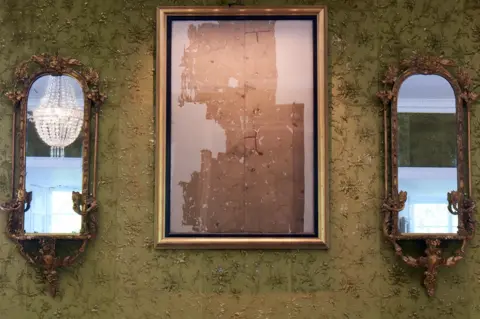 MacLeod Estate
MacLeod EstateFramed and mounted on a castle wall are the faded and tattered remains of the Fairy Flag of Dunvegan.
Legends tell of mythical creatures giving it as a present to the Clan MacLeod, and that it was imbued with powerful magic that could win battles against rival clans.
But behind the romantic tales are other extraordinary stories about it origins.
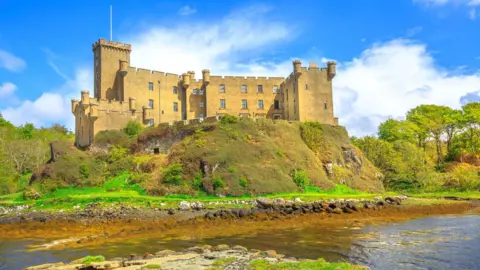 Getty Images
Getty ImagesThe Fairy Flag - Am Bratach Sith in Gaelic - has pride of place in the drawing room of Skye's Dunvegan Castle, ancestral home of MacLeod chiefs for more than 800 years.
The flag itself is believed to be almost 2,000 years old, and the threadbare silk has long faded to a pale beige with some red stitching running through it.
"It's so fragile, it looks like it might turn to dust if removed from the frame," says Kevin Tolmie, president of Clan MacLeod Society of Scotland.
But he hopes one day it might be possible to do some scientific analysis to better understand its age and where it came from.
Until then, the flag is the stuff of myths.
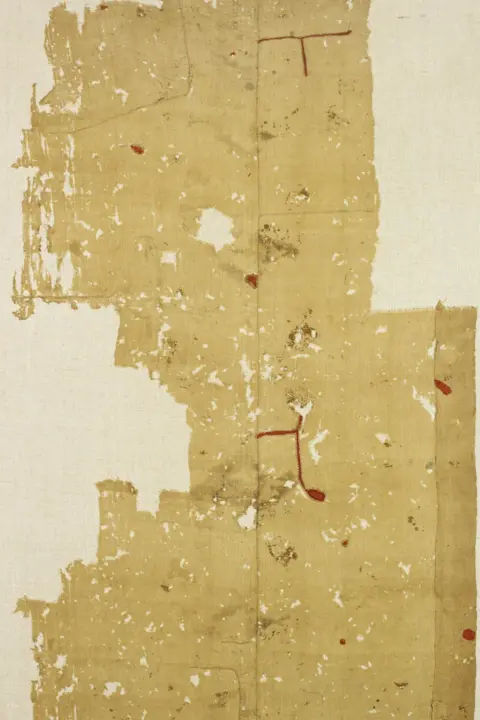 MacLeod Estate
MacLeod EstateKevin, who is also editor of the Clan MacLeod Magazine, says: "A legend has arisen that the flag had magical powers, which is possibly where all the fairy stories came about.
"It was used, it is said, by the MacLeods in two battles - both against the MacDonalds."
At the time, hundreds of years ago, Scotland's clans were vying for territory and resources, such as cattle.
On Skye, the MacLeods and MacDonalds were fierce rivals.
The clans faced each other at Battle of Glendale in the 1490s and the Battle of the Spoiling of the Dyke.
"Supposedly in these battles things were not going well for the MacLeods," says Kevin.
"The Fairy Flag was brought out and defeat was turned to victory."
It was said so many MacDonalds were killed in the later battle the bodies were lined along a dyke and the stone wall pushed over to bury them.
According to the legend, the flag's magic could not be used for a third time in battle.
Kevin says: "Its power for good diminished over time and if it was used frivolously there would be bad consequences."
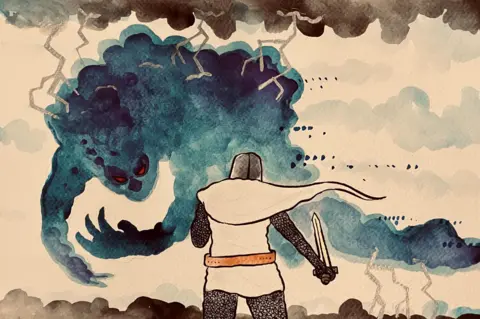 Steven McKenzie
Steven McKenzie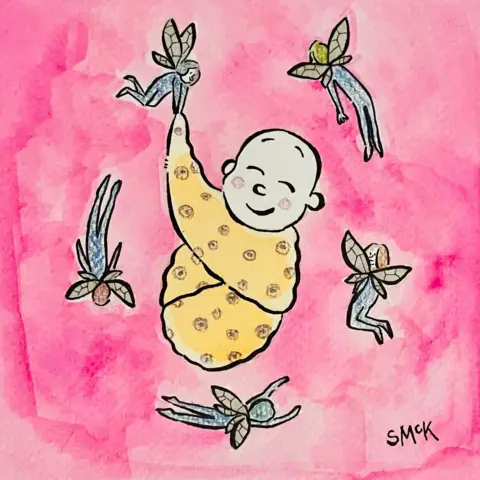 Steven McKenzie
Steven McKenzieKevin's favourite story about the origins of the flag involves a Viking.
"It is one that has the possibility, or greater possibility, of having a grain of truth," he says.
In the early 11th Century a Norseman called Harald Hardrada was captain of the Varangian Guard, international mercenaries fighting for the Byzantine Empire, which stretched across parts of Europe, North Africa and the Middle East.
Hardrada's prized possession was a banner, a type of flag, that he may have acquired during his travels through the empire.
Later, in 1066, Hardrada led a Norwegian army against Anglo-Saxon forces at the Battle of Stamford Bridge, near York.
Hardrada was killed in the fighting but his prized banner was saved.
It was held in the care of several rulers of the Norse-Gaelic Kingdom of Man, including King Olaf the Black who gave it to his son Leod, who Clan MacLeod takes its name from.
Over the years, stories of the flag have been collected by leading figures in the clan.
Dame Flora MacLeod of MacLeod, its first female chief, was particularly fond of the clan's legends.
The flag has been recorded in books about the MacLeods, and has featured prominently in the clan's magazine at least four times.
But Kevin believes it might be possible to do more research.
It was examined in the early 1930s by a Mr A J B Wace, from the Victoria and Albert Museum in London, at the invitation of the then clan chief Sir Reginald MacLeod.
Kevin says Mr Wace said the flag was made of silk from Syria or the Mediterranean island of Rhodes, places Hardrada visited with the Varangians, and he dated the fabric from at least the 11th Century.
He adds: "On being told the scientific assessment Sir Reginald replied 'You may say that but I know it came from the Faeries'."
